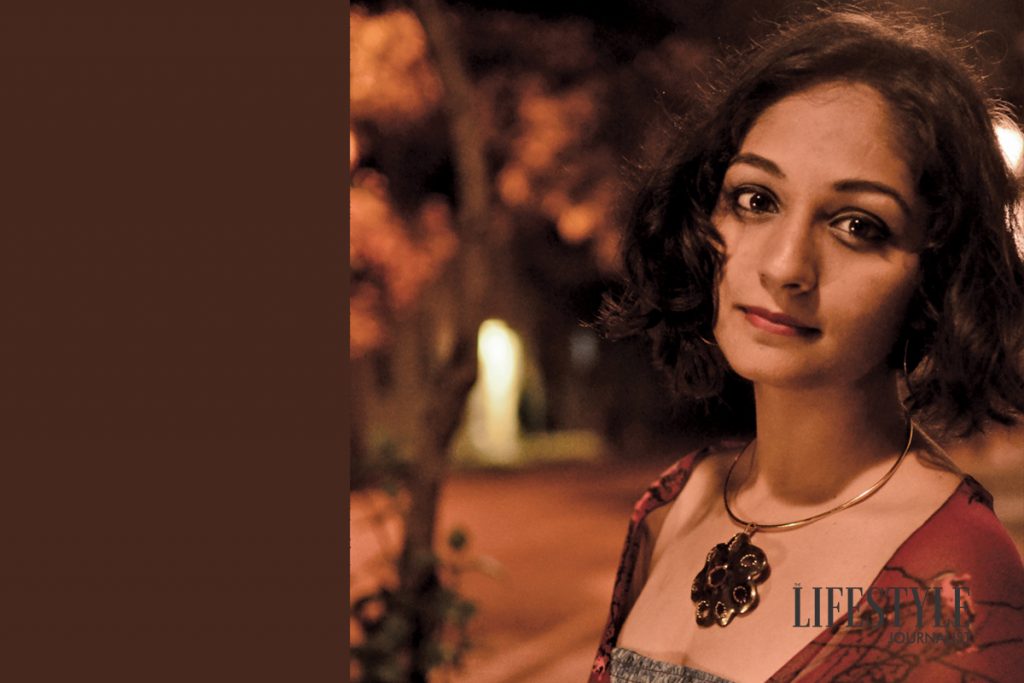She is undoubtedly one of the most popular artists of our country. Her process of creating something new is a spectacle to behold. Let’s discover Srishti Dube‘s method and her artistic world.
Artistic journey
I have always enjoyed the process of creating ever since I can remember. I still don’t think of myself as a true artist, however. I am very critical of my work and feel I have a lot to learn and create before I can consider myself to be a true artist. I like to think of myself as a potter and a curiosity seeker.
I had my initial stint with art and design during my foundation year at the National Institute of Design, Ahmedabad and I was completely taken by how receptive the materials clay and glass were to what I was feeling. I launched my first collection of poppy pods after I was invited to participate in a curated exhibit at ‘The India Story’, Kolkata in 2017. My work is a manifestation of my love affair with ceramic and glass.
Unique work
I believe in creating objects that are cherished, focusing on emotional durability. It has to be heartfelt; otherwise it’s not worth it. The materials, ceramic and glass also demand more time and attention.
“In this fast-paced world, my work is an attempt to bring back slow living, one object at a time. I hope to create pieces that are worthy of being heirloom someday.”
I am fascinated by many possibilities of the medium and how it can transform from being soft and malleable to something nearly stone-like. The materials are impressionable, almost as if they take the shape of emotions of the maker. The creative process asks for me to relax, reflect and also bring in a sense of humility. I am still learning the different moods and possibilities of this art. The imperfections and mistakes add to the beauty of the experience.

Artistic concerns
My biggest concern is being authentic and honest to the materials. It is challenging to see how much I can stretch the limits of the materials and myself, while simultaneously letting it be.
Get started on a sculpture- The process
I believe creativity is a way of living and I always have ideas forming and developing at the back of my mind. When I let my mind wander and thoughts flow freely, I sometimes see a vague image. As the image begins pressing, I know I need to do something with it; else it wouldn’t let me sleep in peace. As the idea brews in my mind, it gradually starts taking shape.
I try to capture the essence of the image or inspiration initially with some rough sketches or miniature clay maquettes. I am more intuitive than methodical, so I straight away get to creating.
For some collections, I work with artisans. I figure out ways to translate my ideas to them and modify and manipulate the forms as we go on. It’s a collaborative effort. Often the final piece is starkly different from where I started.
I also enjoy exploring and not limiting myself to a few techniques.
My childhood…
As a nine or ten-year-old, I came across what I thought then was the most beautiful book ever, ‘A book of Christmas’, with the loveliest of illustrations and stories about Scrooge and the spirit of Christmas. I still have it in my collection and it always reminds me how moving a thing or instance of beauty can be.
Essence of art – The Connect
Most of my work has nature at the core with soft organic forms. I am fascinated by the beauty of imperfect objects. I try to make objects that move through time and seem to take on a quiet life of their own, much as the viewer. There’s also an inherent quest to try and understand life as it is. As in the ‘Poppy pods’ play on the juxtaposition of glass against raw wood- one made alive and one once alive, both trying to imitate life in an almost poetic fashion.

Making of an important sculptural installation
The philosophy and thought behind the piece of art is the key. The material acts as the medium to bring this vision to the world. Hence, craftsmanship is important. For example, an installation I did for Indore International Airport featured ceramic airplanes with Madhya Pradesh’s indigenous gond art hand-painted on them.
Biggest breakthrough moment
I came across Lucie Rye’s work early into ceramics and it was really interesting to see how simplest of forms can hold so much meaning and be deemed as objets d’art.
Blashka’s glass flowers and Karl Blossfeldt’s architecture-like images of nature also stunned me opened me up to new possibilities.
Future
Since I have recently moved into my own pottery space, I finally have the freedom to explore and adopt a more experimental approach. I am also foraying into glass and ceramic jewellery. It is hard to foresee how my art will change but as I grow, I constantly find new inspirations.

